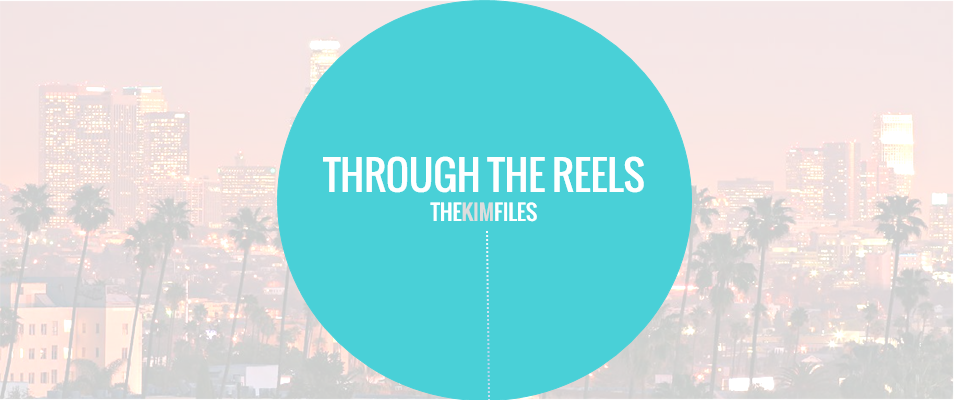 |
| © Pixar Animation Studios |
Is this a whole week late? Maybe. Am I kinda embarrassed that I wrote 98% of this review at 1 AM after watching it opening night only to leave the last 2% until today? ... Yes. To say that I'd been anticipating this release with every last inch of my being would be an understatement; talking about it with refined thought and insight is a tall order, so prepare yourself for mediocrity here. From me, not the movie. Because the greatest film to come out of Pixar's masterwork factory, Finding Nemo, has finally gotten an unneeded but very welcome follow-up (despite the world already enduring multiple Cars off-shoots) with Finding Dory. Considering this role single-handedly revitalized the career of comedy genius, Ellen Degeneres, focusing the movie's events on the life and times of Dory the Blue Tang fish and her mysterious short-term memory loss was, in short, a no-brainer. What I didn't expect was just how all-encompassing the message of embracing differences would be.
A year after crossing the ocean to rescue a little clown fish named Nemo, Dory (Degeneres) has settled into a new life and routine on the reef with Nemo and his dear old dad, Marlon (Albert Brooks). Her lack of memory hasn't slowed her down one bit, until one day she's reminded that everyone has a family—which means her's must be out there somewhere. With only pieces to go on and the sudden realization she was separated from them as a young fishy, Dory enlists Marlon and Nemo to accompany her on a journey home.
Their adventure carries them across the sea once again, this time to Morro Bay, CA and the Marine Life Institute, a sanctuary containing diverse creatures housed for rescue, rehabilitation, and (hopefully) release. With the help of some incredibly talented new friends—including wannabe-captive octopus, Hank (Ed O'Neill), short-sighted whale shark Destiny (Kaitlin Olson), and sonar-deaf beluga Bailey (Ty Burrell)—Dory must infiltrate the Institute to find her parents and set them free. So long as she doesn't forget the reason she came there.
The first film deals with the concept of captivity versus freedom (something not completely lost here), and the enemy is unapologetically us. This time around, humans are hardly the problem, despite always seeming to get in the way of things (children are still, in fact, marine life's worst nightmare; glad to see some things never change.) The real challenges for these characters lie within—phobias, compulsions, disabilities mental and physical—all that must be overcome. And with that, the implications of this story—Dory's story, most notably—are demonstrably sad.

Nobody stole the show from Degeneres as Dory, try as they might. Not even the cutesy-cuddly sea otters, or even baby Dory (voiced by Sloane Murray), who may well be the most adorable animated character ever drawn up (with that little bird from Dory's pre-movie short, Piper, coming in a close second). This film utilizes flashbacks heavily, painting a picture of Dory's past to drive her motivation—and our investment. Marlon and Nemo may have an important role to play, but Marlon takes a back seat as Dory's newest curmudgeonly partner, the "septupus" Hank. He does more than just the heavy-lifting, scooping Dory up and carrying her around on her journey. He is, on the outside, the most capable creature this series has introduced—but even he suffers from debilitating fears and physical ailments. He, of course, wouldn't frame it that way, though.
Director Andrew Stanton dug through the "Best of TV's Comedic Timing" list to litter the newest cast members with "Modern Family" and "It's Always Sunny in Philadelphia" voice talent... but then there's the shoehorn of characters from the original that, to say the least, had no business being in this. Stanton and team had to realize that they'd struck solid gold with these new characters—they should have leaned into them more, without feeling the need to give old favorites Crush (voiced by Stanton) and Squirt a couple of minutes of forced screen time. It's a small complaint, particularly because this only affects the first 15 minutes and re-establishes this world that we met over twelve years ago—but it's a world we never forgot, given that Nemo may be Pixar's most perfect film. I hope that they're braver with separating themselves from the original for The Incredibles sequel than they did with this.
The incredible thing about Pixar, but particularly in Dory, is their ability and willingness to incorporate all manner of characters into their stories. Whether they're differently-abled or socially awkward or obsessive compulsive, all personalities are welcome. With one exception. My boyfriend pointed this out to me as we left the theater, and I couldn't believe I'd missed it. For characters with mental handicaps, this is not a friendly story. There's not one, but two, characters introduced that are slow mentally, and the movie couldn't try harder to make them the butt of every joke. I'm talking about Gerald the Sea Lion and Becky the Pacific Loon (apt, huh?). They're non-verbal, continuously compulse, and frequently derided by their peers for it. In a movie about embracing impairments, it's a wonder how these two managed to draw the short straws. It isn't offensive per se, but it is curious. It's hard not to think that their goofy-toothed grins or cock-eyed tweaks weren't added simply for the laugh, and there were a lot of laughs.
Despite some missteps in use of characters, I'm hard-pressed to find much wrong with the bones of this movie. Not only was it piercingly emotional, it was also hysterical. Credit can be given to Nemo for creating characters so rich with history—history that we get to finally relish in and explore—and they do their star the justice she deserves. Dory distinguishes itself from its predecessor, too, and gives spectacular dimension to Pixar's most beloved fish.
Rating: ★★★★ / 5 stars

No comments:
Post a Comment